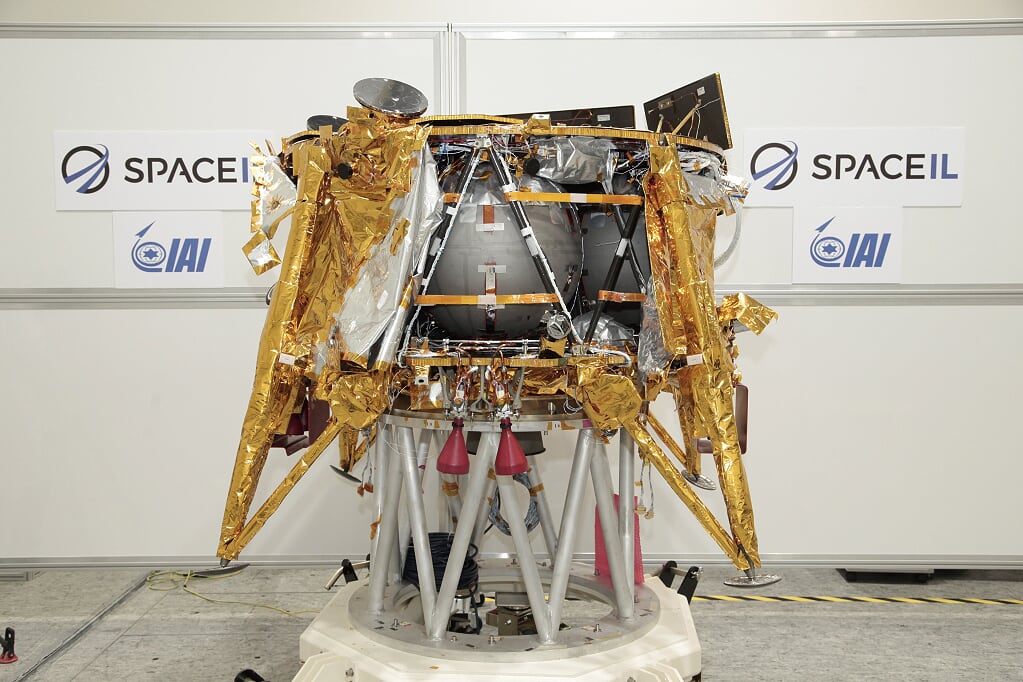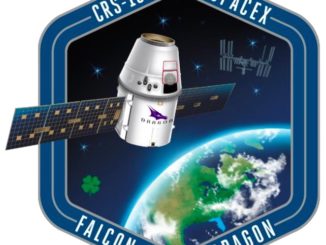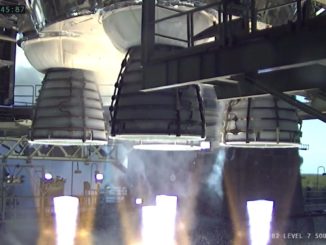
A computer reset on the Israeli Beresheet lunar lander forced has the postponement of the mission’s first engine firing to begin maneuvering closer to the moon, officials said Tuesday.
Mission managers said the robotic lander — seeking to become the first privately-funded spacecraft to reach another planetary body — automatically aborted an orbit-raising maneuver after its on-board computer reset unexpectedly. The engine firing was planned Monday evening, U.S. time.
“During the pre-maneuver phase the spacecraft computer reset unexpectedly, causing the maneuver to be automatically cancelled,” the team said in a statement.
Beresheet — which means “in the beginning” or “genesis” in Hebrew — launched Feb. 21 from Cape Canaveral on top of a SpaceX Falcon 9 rocket, riding piggyback with the Indonesian Nusantara Satu communications payload and the U.S. Air Force’s S5 spacecraft to monitor satellite traffic in geostationary orbit.
The Falcon 9 rocket’s upper stage released its payloads in an elliptical orbit ranging up to 43,000 miles (more than 69,000 kilometers) above Earth, with a perigee, or low point, less than 200 miles in altitude.
While Nusantara Satu and the military’s S5 space surveillance spacecraft head for geostationary orbit — located more than 22,000 miles (nearly 36,000 kilometers) over the equator — Beresheet is heading the the moon, taking a circuitous stepwise approach utilizing 10 burns by the lander’s main engine, a repurposed communications satellite thruster.
Beresheet was developed by SpaceIL, an Israeli non-profit organization founded to promote education for Israeli students in science, technology, engineering and mathematics, or STEM, fields. SpaceIL raised money from private donors to cover the Beresheet lander’s nearly $100 million development cost, with a prime goal of inspiring students to pursue scientific and engineering careers.
Minutes after arriving in space, Beresheet radioed its status to ground controllers at Israeli Aerospace Industries, which built the lander for SpaceIL. The probe’s four landing legs extended as designed shortly after separating from the rocket.

The ground team noticed the lander’s star trackers, which the spacecraft needs to determine its orientation in space, have “high sensitivity to blinding by the sun’s rays.”
Beresheet ignited its 100-pound-thrust main engine for the first time Sunday to raise the perigee of its orbit to an altitude of roughly 373 miles (600 kilometers). The perigee raise maneuver lasted 30 seconds and went off without a hitch, according to SpaceIL.
But the lander’s computer reset Monday while it was out of communications with the ground team, triggering the abort of the next engine burn, which was planned to extend the apogee of Beresheet’s orbit nearly 73,000 miles (117,000 kilometers) from Earth.
Monday’s burn was the first maneuver programmed to send Beresheet closer to the moon, located approximately a quarter-million miles (400,000 kilometers) from Earth.
“The engineering teams of SpaceIL and IAI are examining the data and analyzing the situation. At this time, the spacecraft’s systems are working well, except for the known problem in the star tracker,” SpaceIL said in a statement. “Communication between the control center and the spacecraft remains as planned, and Beresheet continues its previous orbit until the next maneuver.”
The Beresheet spacecraft was scheduled to enter lunar orbit April 4, then spiral down to a lower altitude in preparation for landing April 11 in Mare Serenitatis, one of the vast, dark lava plains on the near side of the moon.
Beresheet is taking a long, circuitous journey to the moon to save money and fuel. The mission would have needed a dedicated rocket to make a direct trip to the moon, an expense the SpaceIL team could not afford.
Other missions have successfully taken a long trip to the moon before, including NASA’s LADEE probe, which launched in September 2013 and arrived at the moon a month later after several burns to boost its orbit farther from Earth before its capture by lunar gravity/
One of the pitfalls of using a longer journey to reach the moon is that the probe spends more time traveling through the radiation belts, donut-shaped rings of charged particles surrounding Earth that could pose a hazard to spacecraft electronics. It was not immediately clear if radiation could have caused Beresheet’s computer to reset Monday.
Beresheet’s original flight plan called five engine burns to position the spacecraft near the moon April 4, when a sixth engine firing — with the help of lunar gravity — was planned to swing the probe into an elliptical lunar orbit. Additional engine firings were planned to lower Beresheet’s altitude above the moon to a circular orbit, before the final braking maneuver ahead of the April 11 landing.
Email the author.
Follow Stephen Clark on Twitter: @StephenClark1.



